Local Column
COLUMN
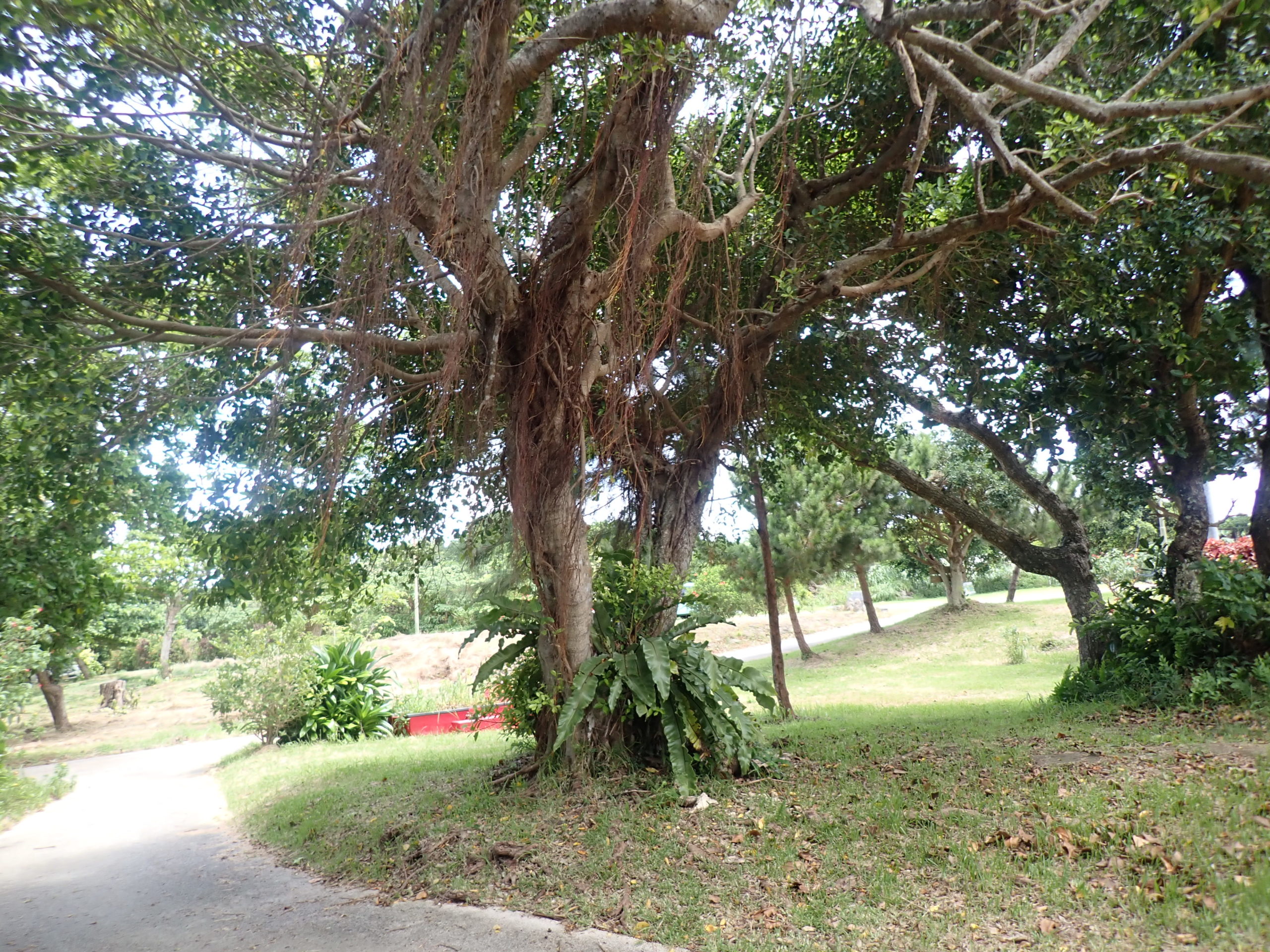
Miyakojima Island Plants
Hello everyone!
Miyakojima Island has a warm climate that cannot be felt on the mainland, allowing a wide variety of plants to thrive.
In addition to bright, Okinawan-like plants such as hibiscus and bougainvillea, many other plants typical of subtropical jungles grow wild.
When you explore on a tour, you will be able to enjoy the great outdoors with a guide's commentary.
Please join the tour and enjoy the encounter with the plants of Miyako Island.
This article introduces such plants of Miyako Island.
目次
Miyako Island is home to many plants that cannot be found on the mainland!
Miyako Island belongs to a subtropical climate, and you can feel the warm weather throughout the year.
You will encounter rare plants that cannot be seen on the mainland, such as plants with brightly colored petals in primary colors and tropical fruits.
It is said that approximately 1,600 species of vascular plants grow in Okinawa, and the amount and variety of plants is abundant.
Ferns grow abundantly in Okinawa, but a few gymnosperms also grow wild, although in smaller numbers.
One of the advantages of Miyako Island is that visitors can enjoy the glittering flora and fauna that only a subtropical climate can offer.
20 plants native to Miyako Island
(1) Sagaribana
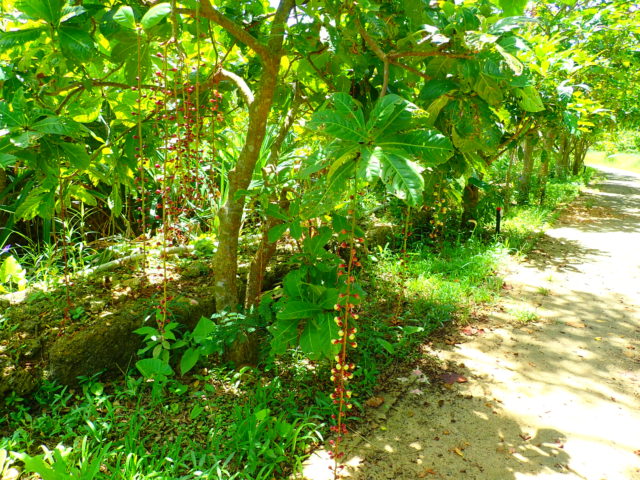
Sagaribana grows wild near the upper reaches of mangroves in subtropical regions.
It is a fleeting flower that blooms on summer nights and falls off the next morning.
Because of this characteristic, it is also called an overnight flower or a phantom flower.
Major distribution areas in Japan include the Amami-Oshima and Okinawa areas.
It grows wild on Iriomote Island and Ishigaki Island, but the sagaribana on Miyako Island is planted along the road.
The sagaribana of Miyako Island are illuminated during the season, making it ideal for those who wish to take the time to appreciate the beauty of the sagaribana.
(2) Adan
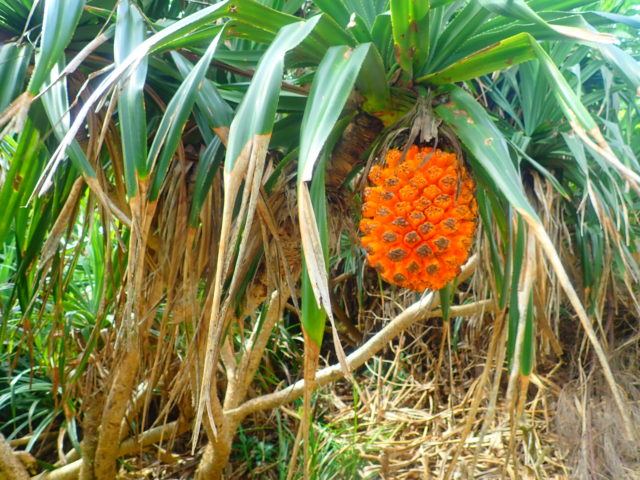
Adan is a plant that bears pineapple-like fruit that grows wild along the ocean where it is subject to wave spray.
It has a downstretched prop root, with thick branches sparsely spreading laterally, which remain in a ring when defoliation occurs.
The leaves are 1 to 1.5 m long and 3 to 5 cm wide with a thick, stiff texture.
Flowering time is from spring to fall and is not constant.
Adan nuts are a favorite food of coconut crabs, so if you take a walk near the adan trees at night, you have a high probability of encountering coconut crabs.
You can enjoy encounters not only with the plants of Miyako Island, but also with living creatures!
(c) shell ginger
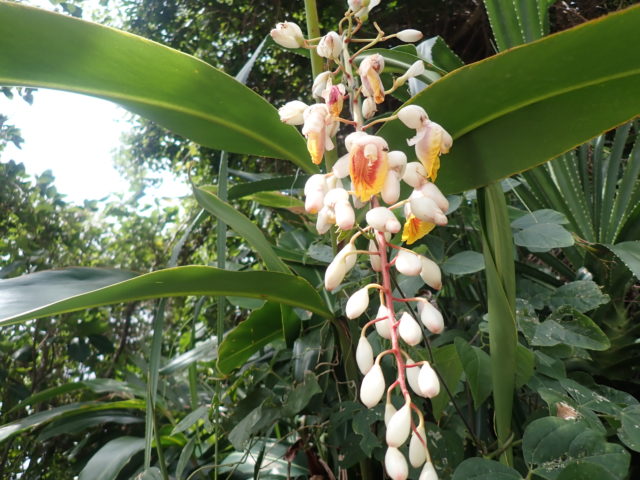
Tsukimomo" is read as "getto," not "tsukimomo.
The glossy, fresh green leaves are shaped like ginger leaves, about 10 cm to 15 cm long.
The buds are white, the petals yellow, and the entire plant is brightly colored.
Gekko leaves have bactericidal and insecticidal properties and are used in insect repellents, antiseptics, and cosmetics.
In addition, it is also used in soap, distilled water, and tea leaves.
(iv) Sotetsu
Sycamore trees, which look a lot like palm trees, are native to Hachijo Island and southern Kyushu, and can be seen on the mainland as vegetation at train station rotaries.
They have been used for a long time for appreciation and food.
Between June and July, the buds swell into a dome shape and white or yellow flowers bloom.
In the fall, it bears fruit.
Sycamore nuts are small, red, and round, and are sometimes used for crafts.
Families with children should try it!
(5) Shimapapapaya
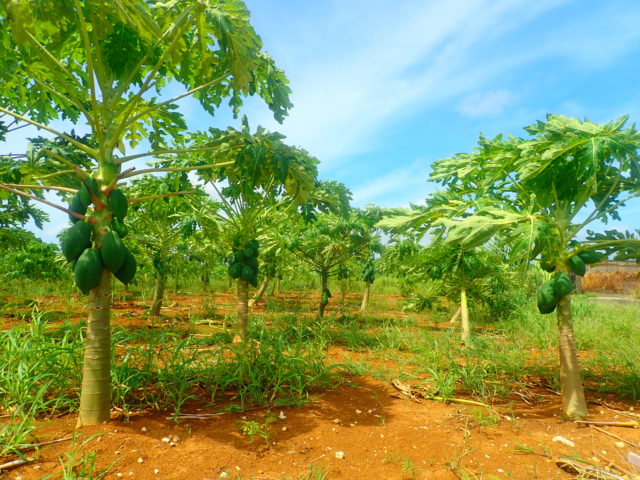
Although the name "papaya" gives it a strong image as a fruit, the striped papaya is more often used as a vegetable, such as in stir-fries in which the pre-ripe green ones are cut into strips.
The texture is crispy and the flavor is light and refreshing.
A similar taste is found in radishes and bean sprouts.
The striped papaya is an evergreen flowering tree with large leaves on stems that grow straight upward.
It grows quickly and may bear fruit again the year after it is harvested.
Since the plant grows in warm regions, it is a food unique to the warm island of Miyako.
(6) Kuzuimo
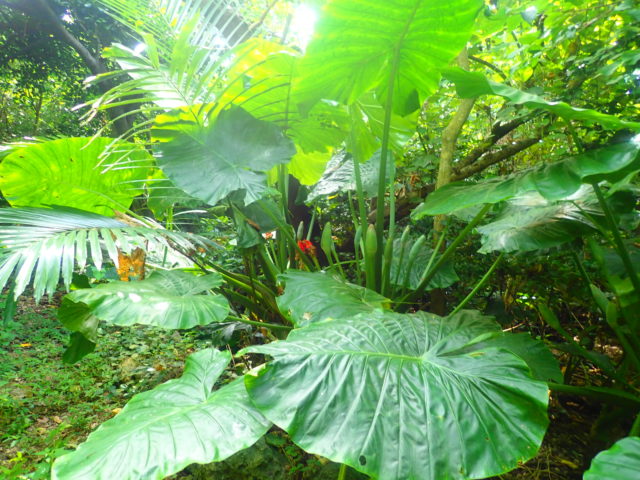
Kwazui taro is a type of taro that grows wild in the mountains.
Some people mistakenly eat it because it looks like a taro.
However, its similarity to taro is only in its appearance. The taro is poisonous in its storage stem, which causes numbness, dizziness, and nausea if ingested.
The name "kwazuiimo" comes from the Japanese word "kuwazui imo," meaning "sweet potato without food.
Be careful not to accidentally eat it just because it looks good!
The leaves of the kwazui potato are huge, about 60 cm long, and are also the leaves that Totoro carried as an umbrella in the rain.
If you give it to your child, it is sure to be an Instagram hit!
(7) Yaeyama hirugi

Yaeyama hirugi is a member of the hirugi family that forms Okinawa's mangrove rivers, which are native only to the main island of Okinawa and southward.
The tree is supported in the center by a thick root, the prop root, that keeps the tree from falling over, spreading out in an unusual way like an octopus foot.
Most of the mangrove trees you often see are Yaeyama Hirugi.
It is also a tall tree, up to 10 meters in height, and can cover a small river in an arch.
(viii) Murasaki omoto
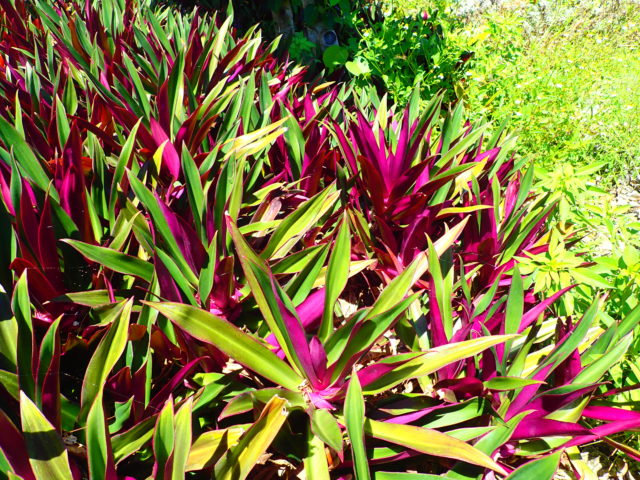
Murasaki-omoto is a 20-30 cm tall grass that prefers to grow in sunny locations.
It also produces white flowers in summer.
A close relative of the Omoto plant, the underside of the leaves is purple, contrasting beautifully with the white flowers.
Although Murasaki omotos are popular as ornamental plants, they were introduced to Japan during the Edo period (1603-1868).
The language of flowers is "travel" and "voyage.
This is a flower language unique to Murasaki Omotos that have crossed the sea.
nine-spotted ladybug (Coccinella septempunctata)
Hirudo dama is a plant that is very salt tolerant and grows in brackish water areas where freshwater and saltwater mix.
Bamboo shoot-shaped breathing roots (junkon) are produced from the ground.
Although it is a mangrove plant, it does not belong to the Hirugiaceae family, which includes Yaeyama Hirugi, Ohirugi, and Mehirugi.
The name "hirugi" was given to it by adding "damashi," which means closely related to hirugi.
It is called "pencil root" in English because its long, slender roots stand upright out of the water like a pencil.
The naming of the plant is lovely!
(10) Bougainvillea
Bougainvillea is a flowering tree unique to the tropics and blooms brightly in pink and orange during the summer season.
Its tropical appearance and beauty make you feel like you are in Okinawa when you encounter it.You can feel it.
The plant can only grow in subtropical and tropical zones and is deciduous at temperatures below 10 degrees Celsius.
It can overwinter at temperatures up to 5°C, although it will defoliate.
In the tropics, it is evergreen and grows to a height of 20 to 30 meters.
When you visit Miyako Island, be sure to see the bougainvillea, a typical Okinawan flower with the word "passion" in its flower language!
(11) Hibiscus
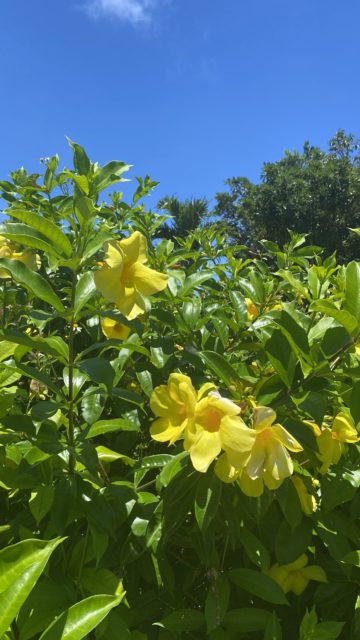
The hibiscus is a very well-known flower, so many people can immediately imagine it.
What is your favorite tropical flower?" hibiscus is probably the first flower that comes to mind for many people.
The hibiscus flower may be most commonly seen in red, but petals in a variety of colors exist, including white, pink, and orange.
The flowers seem to last almost only one day, but in some cases they may last two days.
The language of hibiscus flowers is "delicate beauty" and "new love.
The language of flowers differs depending on the color of the flower, so if you are interested, please look it up.
⑫Ginggokan
Gingko nut is a flowering tree that grows in the tropics and subtropics, and the essential oil sweet acacia flower oil extracted from the petals is used in cosmetics and other products.
The bark and fruit also contain tannin, which is used as a raw material for dyeing and ink.
It is a plant that is indispensable to human life.
Banyan Tree
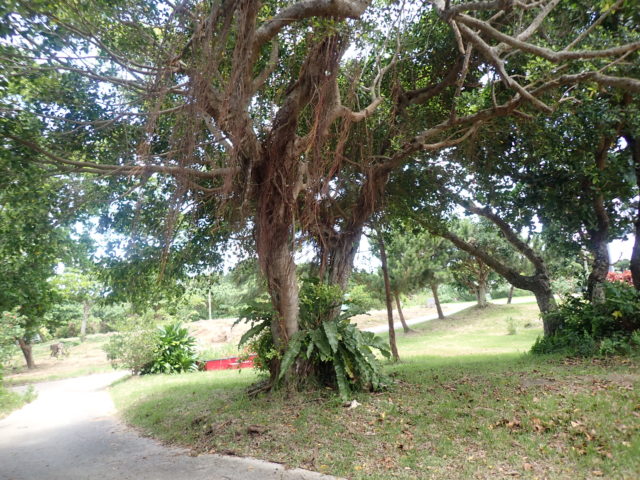
The banyan is the city tree of Miyakojima City, and when it grows, its branches and roots grow into an unusual shape.
It is also revered as a sacred and sacred tree, and is a popular power spot.
You may have heard of the banyan because it is a beloved houseplant.
Because of its hardiness, the tree is used as a windbreak by transplanting it along the coast.
⑭" (Japanese only)
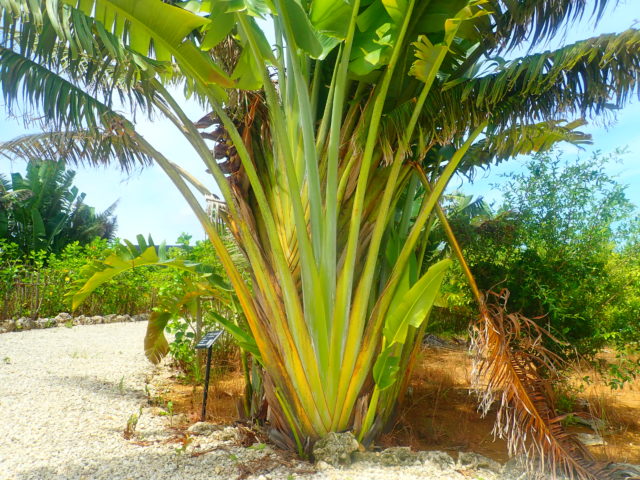
The giant kibasho is a tree that often has ragged leaves after a typhoon passes, as its foliage grows during the season when typhoons visit the area.
It is also called "traveler's tree" because its leaves spread east and west, and travelers use it as a landmark.
It is said to have become "Oki-basho" because its leaves, which spread east to west, resemble the leaves of "Basho" (a Japanese name for the Japanese pepper).
It is cultivated as an ornamental tree because of its unique and beautiful shape.
Leaves drop off from below, and when the petiole falls off, the trunk emerges.
It takes about 10 years for the first bloom, so it would be interesting to see if the giant kibasho is in bloom if you see it on your trip.
(xv) Great Crested Hatchet
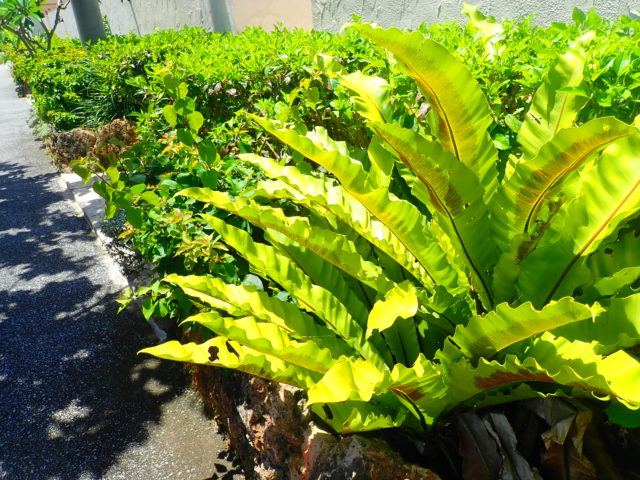
Otaniwatari is a plant that grows on rocky shores, and its shoots are cooked and eaten as tempura or soaked.
The taste is similar to "Tsurumurasaki"? I have the impression that it is similar to "Tsurumurasaki".
Its slightly sticky consistency makes it perfect for eating as a soaked dish.
It is widely distributed in the Okinawa area, including Miyako Island, and seems to be called differently in different places.
The name in Miyako Island is "Sammus", so when looking for Otaniwatari in Miyako Island,Be careful what you call it.
⑯Deigo
The deigo is a cold-resistant deciduous broad-leaved tree belonging to the genus deigo (Fabaceae) and is designated as the prefectural flower of Okinawa.
Many of you may have heard it before, as it appears in songs by Okinawan artists.
Deigo trees are often planted as park gardening and roadside trees.
It puts out new shoots around May and blooms twice from June to October.
It is said that the blooming of deigo trees can predict the arrival of a typhoon, and when they are in full bloom, a strong typhoon is said to be coming.
The language of flowers of such red and energetic deigo is "dream, vitality, vigor, and harmony.
It is a flower with a flower language that is very Okinawan!
⑰ Sugarcane
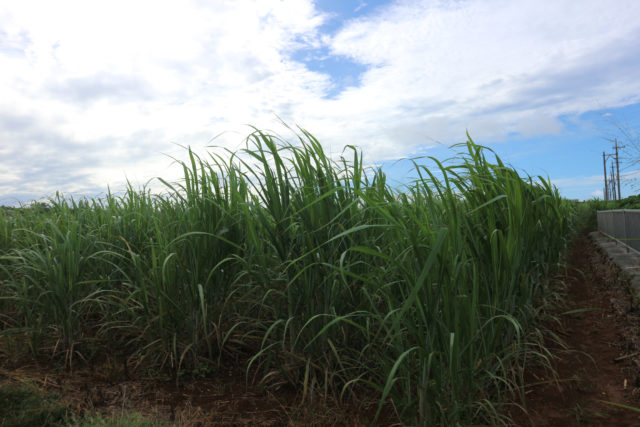
Sugarcane is the plant used to make brown sugar and is one of the most widely grown crops on Miyako Island.
A double crop, spring and summer planting, yields about 340,000 tons throughout the year.
Miyako Island produces the largest amount of sugarcane in Okinawa Prefecture, so much so that Miyako Island accounts for about 40% of Okinawa's total sugarcane production.
Sugarcane is high in minerals such as potassium, calcium, and iron, which are very good for the body.
During the harvest season, you can taste the freshly squeezed juice.
They say the taste is slightly sweet and nostalgic.
Fresh sugarcane juice is a unique taste of Okinawa, so if you are interested, please try it!
Japanese bird cherry (Prunus grayana)
Kanhizakura is read as "Kanhizakura" (meaning "scarlet cherry blossom").
A member of the cherry tree family brought to Okinawa by the former army, it is the earliest blooming cherry tree in Japan.
The sight of pink scarlet cherry trees blooming in the midst of the green forest is so beautiful that it is inevitable to be moved!
Symbolizing its appearance, the language of flowers of the scarlet cherry blossom is "graceful beauty.
19. Lily of the valley
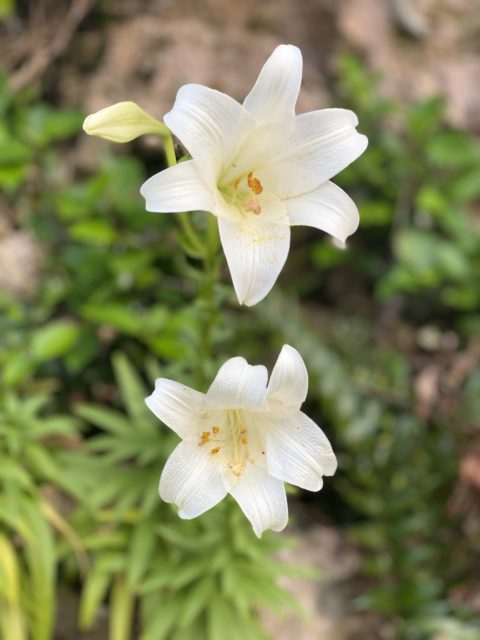
Teppo lily is a perennial herb of the lily family, Liliaceae, native to the Japanese hardiness zone and widely distributed from southern Kyushu to Okinawa.
They are called Ryukyu lilies because most of them grow in Okinawa.
The blooming season of the teppo lily is from May to August.
The lily is said to have been called "swaying" because of its thin stem and large flowers that sway in the wind, which in turn gave rise to the name "lily.
The shape of the petals resembles an old-style gun, hence the name teppo lily (teppo lily).
「⑳Shima banana

Island bananas are small bananas, like monkey bananas, and are very tasty with strong sweetness and moderate acidity.
It has a sticky, chewy texture and an aroma that wafts through the nose.
Harvesting takes place from early summer to early winter, and unattended sales take place during this time.
However, production is very low and prone to disease, and many years are ruined by typhoons.
summary
We introduced the plants of Miyako Island.
How was it?
Miyakojima Island is home to a wide variety of plants, including hibiscus, bougainvillea, and other typical Okinawan plants, as well as Yaeyama hirugi, which forms mangroves.
There are also many delicious fruits such as island bananas and tropical fruits, which you should try when you visit Miyako Island!
Thank you for reading to the end.

